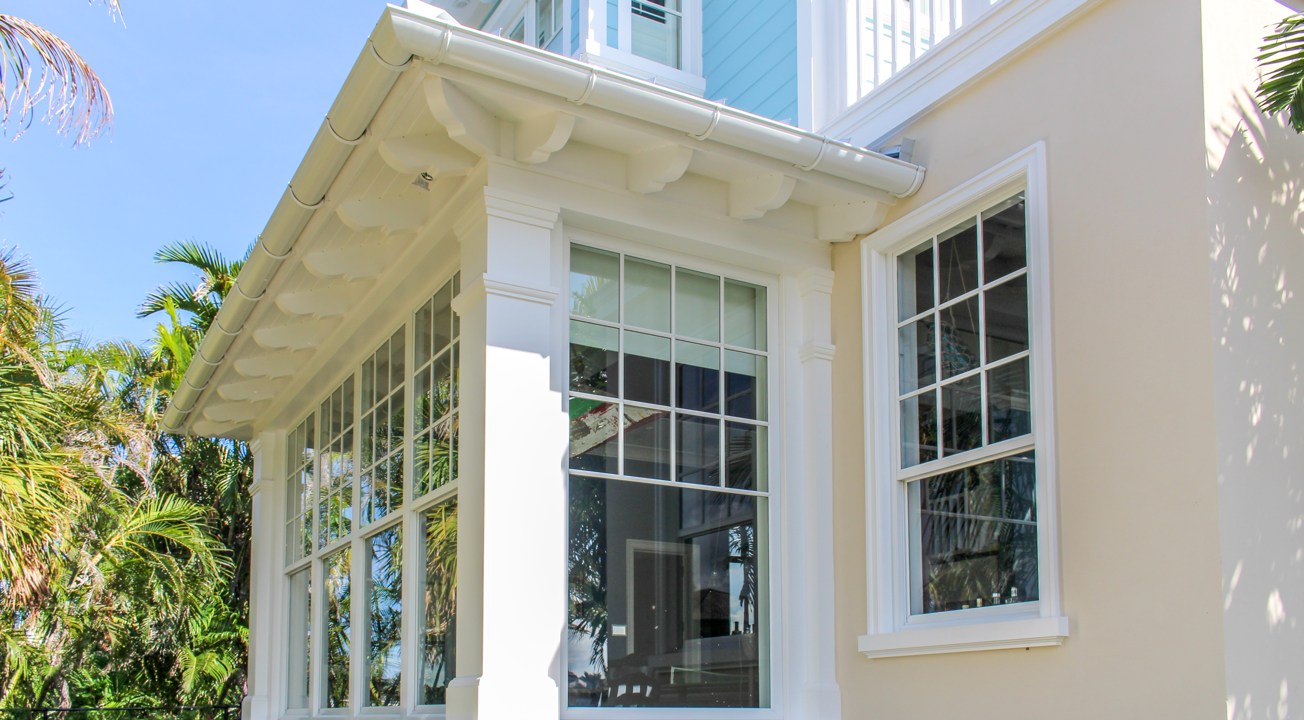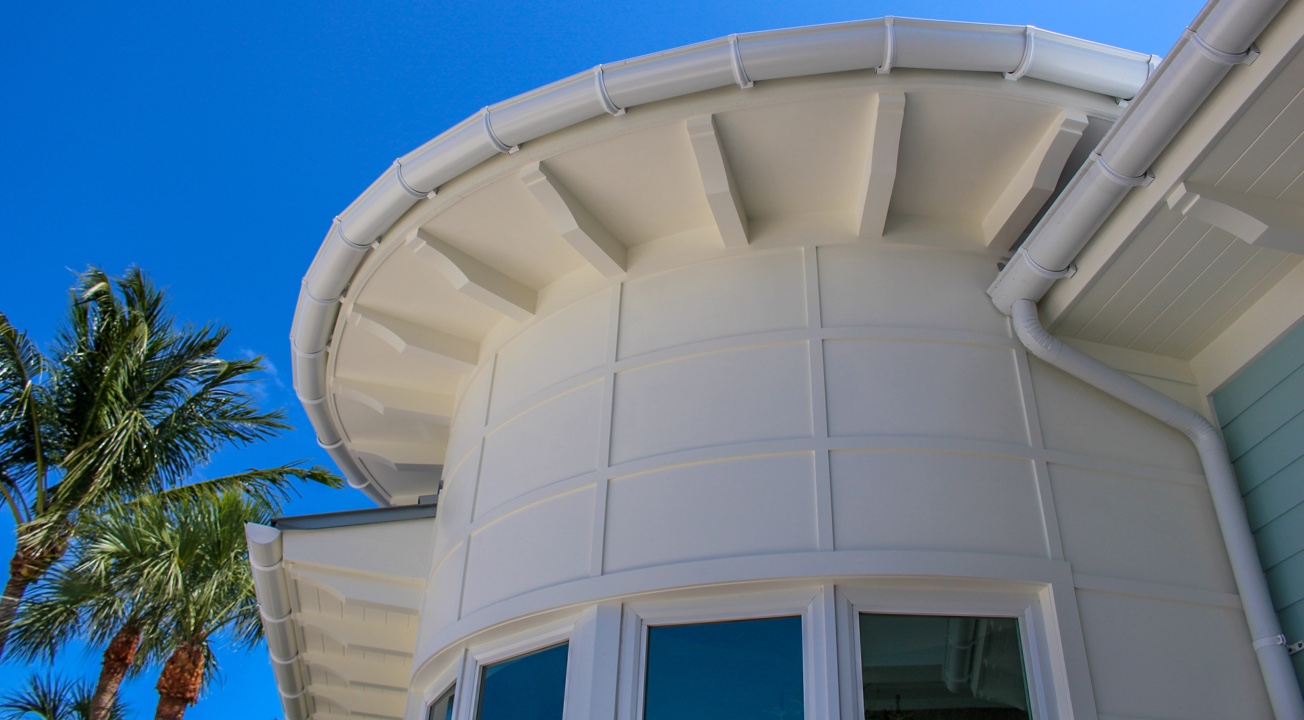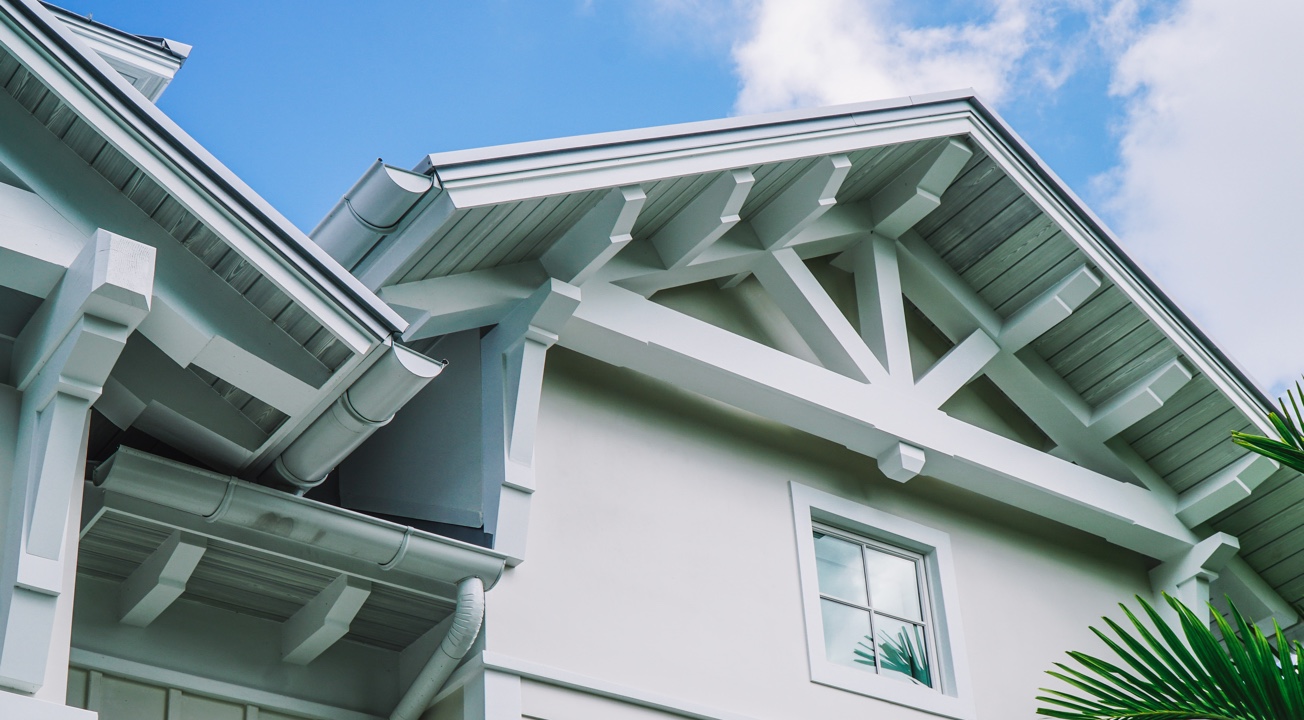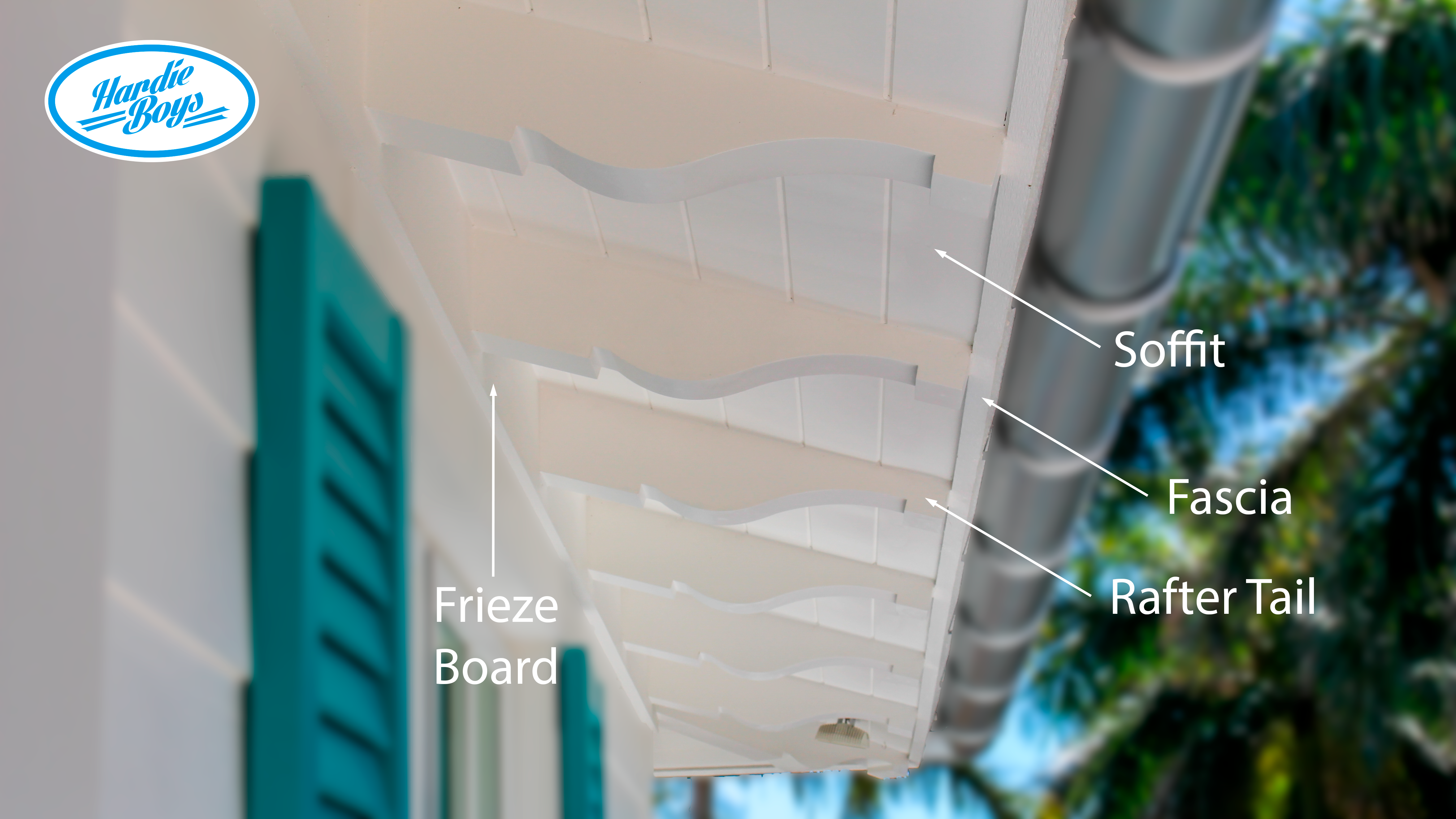What is a Soffit? – Its purpose and importance for your home
The age-old trope of “making your house a home” is still relevant today and proves even more difficult to actualize with fast-paced consumer culture. Everything needs to be disposable and constantly updated and our homes have suffered because of it. Hardieboys have been in business for more than 20 years and one of the defining features we add to your home is a soffit system that not only creates an elegant and timeless façade but also adds to your home’s endurance and integrity. What exactly is this system and why does your home need it?
A soffit is a broad term for an architectural feature that is used in conjunction with construction components. They protect the internal structures from the elements but have also come to serve an important aesthetic purpose. Thanks to innovation in this field the installation and design process for soffits have been streamlined to give your house a sleek and finished look at a fraction of the cost.
The soffit system we install consists of four parts that are all custom-made to fit your home. Together these components create a structurally sound and visually appealing finish to your roof trusses. It is important to understand these individual components and implement them in the most effective way to complement your house’s exterior. Here is all you need to know about this all-important feature.
What Is a Soffit?
Exposed ceilings leave room for unappealing building elements to be visible. Wiring, tubing, and beams can be unsightly and dangerous to leave open. Instead, soffits will provide a clean-cut and modern covering that will protect these structures and ensure uniform finishing.
Stepping onto a front porch or balcony should be a welcoming experience and soffits create that exact atmosphere by eliminating any raw areas. So, by covering the underside of your roof’s overhang you tie all the loose ends in your design and create a complete and polished look.
Four key components complete our soffit system; fascia, soffit panel, frieze board, and rafter tails. At the end of the roof trusses, we install the fascia. This goes along the outside edges of your home. This serves as decorative molding. Next, the soffit ceiling covers the underside of the technical ceiling or lies between your structural walls and the fascia. Between the soffit and the house wall, we add another element, the frieze board. This creates a seamless corner on the outer edge of the wall. The last part that finishes this high-end design is the rafter tail. These attach to the soffit for structural support and decorative purposes.
Together these four elements form a comprehensive seal of the outer edges of your roof to keep the bones of your house dry and protected.
Purpose of a Soffit
The weather, bugs, mold, rust, and other pests can all be detrimental to your home’s longevity and structural integrity. The addition of a soffit to your roof overhang will ensure complete protection from these complications. Furthermore, they have been developed to allow airflow and direct the flow of water away from the house’s foundations. You will also notice moderate temperature changes as it proved shading over windows.
The exterior of your home needs more than a fresh coat of paint to look updated and polished. Our unique soffit designs will add depth to your home and create a definitive look that will stand the test of time. The soffit was evolved from being a necessity in construction to being a revolution in design.
The benefit of a Soffit
Ventilation: Classic timber homes are at risk of a multitude of problems caused by improper ventilation along with ceilings. The installation of a soffit will guide airflow away from these delicate areas of your house. Hot and humid air will be expelled as the soffit will promote airflow.
Weatherproofing: Rain and wind can wreak havoc if the eaves of your house are not properly covered and protected. The soffit will ensure the proper protection against these elements. It creates closure in areas where the wind can potentially force moisture into crevices of your roof that will, over time, deteriorate the building and create a hazardous environment for you and your family.
Maintenance: Installing this ultra-important barrier to your structure will lessen any maintenance needed in the long run. The cellular PVC material is synthetically manufactured and means there is little to no corrosion over time. We recommend painting your soffit with 100% Acrylic Latex Exterior Paint to add to its durability.
Temperature Control: As already discussed, soffits promote the flow of fresh air into your attic spaces. Many of our designs also create shading over windows that will aid in temperature control. Our installations are also painted with a heat reflective paint that prevents the material from absorbing heat and heating up.
Aesthetics: You can have soffits custom-created with a variety of finishes to complement your home’s design. The finishing is sleek, clean, and modern but still introduces a warm and welcoming tone to your home. You can choose between a multitude of tones to suit your style and create custom designs. The versatility of this addition is astounding and the possibilities are endless.
Soffit FAQ
SOFFIT VS EAVE
These two components are two sides of the same structure. The eave is the roof edge that overhangs the outside walls of the building. These are often left open with exposed beams. The soffit is the covering that is placed on the underside of the eave to enclose any exposed elements.
SOFFIT VS BULKHEAD
In the kitchen, these two elements co-exist and will be implemented depending on your design needs. In short, the soffit is the space between the cabinet and the ceiling. This space could be left open or used for lighting fixtures or decorative purposes. The Bulkhead would be the enclosing placed around the empty space if you require a more uniform look.
How much does a Soffit Cost?
At HB Elements, we implement high-quality and durable cellular PVC soffit systems. These systems eliminate wastage as they are made to fit your exact specifications.
They cut down on costs as they are low maintenance and ultra-resistant to traditional weaknesses. Ease of installation also cuts costs as you can implement these systems in a fraction of the time. The price is likely to range depending on your location or city.
The initial material cost is higher than timber but our product will never crack or absorb moisture which will give you a lifetime of well-maintained soffit finishing. Per square foot, the price for raw PVC material ranges from $6-$12 per square foot. Soffits are sold in sections and labor per section can range between $18 and $40 depending on the size and time needed for installation.
If you are interested in ordering a HB Elements product, contact us by emailing us at [email protected] or calling (954) 784-8216.
Cost to Replace a Soffit
It is possible to replace a part of the soffit and this will be calculated per linear foot. You need to factor in labor, materials, and removal. For an average 12-foot section, your replacement costs should be under $150 depending on how serious the damage is.
Cost to Repair a Soffit
A Soffit seldom needs repairs and should rather be replaced per section. Expect the same charges for repairs as replacements. Luckily, his heavy-duty material is not likely to need repairs and only needs light maintenance such as repainting and cleaning.
WHAT IS A SOFFIT SYSTEM?
HB Elements Cellular PVC Soffit Systems typically have 4 components – fascia, soffit panel, frieze board, and rafter tails. To begin, it’s important to understand what these components are, and also their vital functions.
The fascia is a finishing edge board that is installed around the outside of a home and is attached to the ends of the roof trusses. The fascia board covers the outside perimeter like a decorative molding piece around the area where the soffit forms the ceiling. It provides a smooth continuous appearance to the edge of the roof.
Soffit ceiling is the covering that forms a ceiling on the underside of the roof in the area that extends beyond the walls of a home. Simply put, it covers the gap between the wall and the fascia, also referred to as the eave. It can also cover the underside of arches, stairways, and balconies. Learn more about soffit ceilings by reading our ultimate guide to soffit ceilings.
The frieze or frieze board is a trim board that runs along the top of the house’s wall, forming a corner with the soffit.

Traditionally, in a timber-framed roof, the rafter tails or truss tails were the portion of the rafter that extended beyond the exterior walls.
With the common prefabricated truss system, rafter tails are generally components that are attached to the soffit for aesthetic purposes. They are sometimes left square but often have a decorative profile at the end.
The function of these combined parts is to seal the upper part of the building envelope below the roof, provide protection from the elements, create additional shade- reducing solar impact, and not least of all they add detail and character to the overall architectural design.
The components of its system were originally made from wood and later aluminum and vinyl soffits. The problem with a wood soffit is that it is susceptible to pests, mold, rot and requires continual upkeep. Vinyl soffit fades, is flammable, is more susceptible to movement, and is not very aesthetically pleasing. Aluminum can bend, dent and pit, and is not easy to repair or refinish once installed.

Now, with newer technology, Free Foam Cellular PVC, often called cellular PVC, has resolved these issues. This material resists termites and other insects, pests, mold growth, rot, heat damage, and many other problems that have traditionally plagued the soffit system. It has excellent paint adhesion and is easy to install. It’s available in a variety of styles that add beauty and character to your home.
Why use Hardie boys?
We have been in the business of home refinement for more than 2 decades. Our system is also designed to deliver flawless finishings that are unique and custom to your needs. We have a broad catalog of designs that will enhance the splendor of your house’s exterior and make you feel right at home.
This, paired with the strength of our material will give you exceptional results, every time. The free foam Cellular PVC has been engineered with practicality in mind. It is lightweight yet functional, custom yet efficient and above all else, made to last a lifetime.
Final Thoughts
Installing a soffit system has never been this easy and there are countless options available on the market to suit your pocket. And considering the progress made with material durability you can be certain that your soffit system will stand strong, no matter what life might throw at it. Get in contact with one of our representatives today to talk about a customized solution to your construction needs.
IF YOU WOULD LIKE TO FIND OUT MORE ABOUT HOW HB ELEMENTS, INC. CAN HELP YOU WITH A BEAUTIFUL AND LONG LASTING SOFFIT SYSTEM, CALL US TODAY AT 954-784-8216 OR VISIT US AT WWW.HARDIEBOYSINC.COM. DO IT ONCE, AND DO IT RIGHT.













4 thoughts on “What is a Soffit?”
Comments are closed.